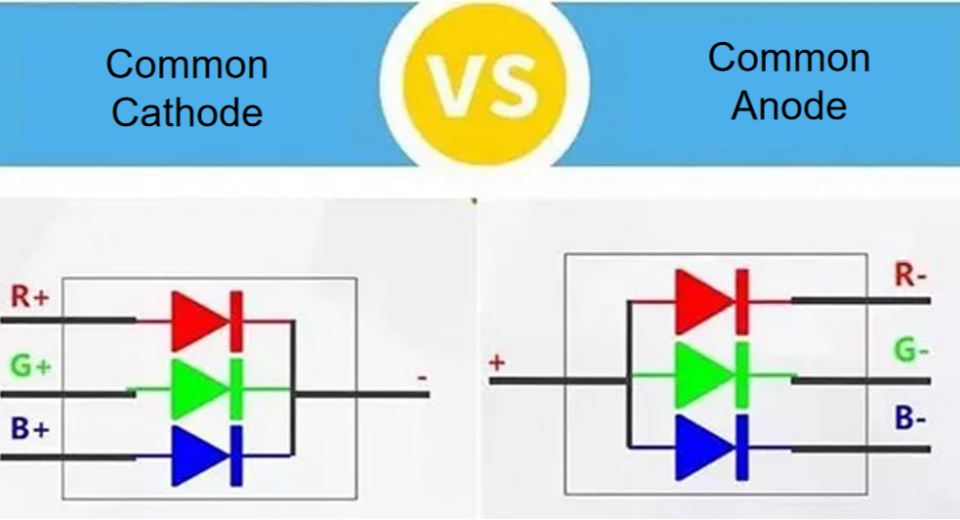Common anode and common cathode LED display: Which is better for you?
Recommended reading
Why Are More Control Rooms Switching to COB Fine Pitch LED Displays?
Recommended reading+86 755-33691736inquiry@dicolorled.comNo.13 Huiye Road ,Tangjia Community,Fenghuang Street, Guangming District, Shenzhen,China 518103 Shenzhen Dicolor Intelligent Technology(Dongguang) Co., Ltd Gate No.4-5, Building A-17,...
2025 LED Display Industry Trends: What’s Next for the Future of Displays?
Recommended reading+86 755-33691736inquiry@dicolorled.comNo.13 Huiye Road ,Tangjia Community,Fenghuang Street, Guangming District, Shenzhen,China 518103 Shenzhen Dicolor Intelligent Technology(Dongguang) Co., Ltd Gate No.4-5, Building A-17,...
How to Maximize Brand Exposure with Outdoor LED Advertising? MP Series Case Study in Urban Business Districts
Recommended reading+86 755-33691736inquiry@dicolorled.comNo.13 Huiye Road ,Tangjia Community,Fenghuang Street, Guangming District, Shenzhen,China 518103 Shenzhen Dicolor Intelligent Technology(Dongguang) Co., Ltd Gate No.4-5, Building A-17,...
System Requirements for XR and VP Virtual Production
Recommended reading+86 755-33691736inquiry@dicolorled.comNo.13 Huiye Road ,Tangjia Community,Fenghuang Street, Guangming District, Shenzhen,China 518103 Shenzhen Dicolor Intelligent Technology(Dongguang) Co., Ltd Gate No.4-5, Building A-17,...
Customer Service
+86 755-33691736
inquiry@dicolorled.com
Headquarters Address
No.13 Huiye Road ,Tangjia Community,Fenghuang Street, Guangming District, Shenzhen,China 518103
Shenzhen Dicolor Intelligent Technology(Dongguang) Co., Ltd Gate No.4-5, Building A-17, No.780 Xiecao Road , Xiegang Town, Dongguan, Guangdong, China
When selecting an LED display for your business or project, one of the most important decisions you’ll need to make is whether to choose a common anode or common cathode LED display. These two configurations represent different wiring systems and can significantly impact the performance, power consumption, and overall functionality of your display. In this article, we will compare the two options and help you determine which one is best suited for your needs, with a focus on the advantages and performance of Dicolor LED displays.
Before diving into which one is more suitable for your needs, let’s first clarify the difference between the two types of LED displays:

Common Anode LED Displays: In a common anode configuration, the anodes (positive sides) of all the LEDs are connected to a common point, and the cathodes (negative sides) are controlled individually. This means that to turn an LED on, you apply a voltage to the cathode. Common anode displays are typically used in certain applications where the control circuit design benefits from a positive voltage supply.
Common Cathode LED Displays: In a common cathode configuration, the cathodes (negative sides) of all the LEDs are connected to a common point, and the anodes (positive sides) are controlled individually. To turn an LED on, you apply a voltage to the anode. Common cathode displays are generally more common and can offer easier control over the LEDs, making them suitable for a wide range of applications.
Common Anode LED displays offer some distinct advantages that may be beneficial depending on your specific needs:
Power Efficiency: Common anode displays are generally more power-efficient in certain types of applications, as they often use voltage drop techniques that can reduce overall energy consumption. This makes them suitable for power-sensitive environments.
Compatibility with Certain Control Systems: If you are working with control systems that require a positive voltage supply or are designed for common anode configurations, these displays may be easier to integrate with your existing equipment.
Stability in Higher Power Applications: Common anode systems tend to be more stable when used in higher-power setups, where managing voltage levels can be crucial.
On the other hand, common cathode LED displays come with their own set of advantages:
Wider Availability and Lower Cost: Common cathode LED displays are generally more widely available and may be easier to source. They are also often more affordable due to their widespread use and compatibility with a wide range of control systems.
Easier to Control: Common cathode displays are easier to control and are typically preferred in digital systems. Because the cathode is shared, controlling the anode side of the LEDs is simpler, making them more compatible with many types of driving circuits and controllers.
Better for Low Voltage Circuits: Common cathode displays are better suited for low-voltage circuits, especially in digital applications such as clocks, meters, and signage.
Now that we understand the key differences, let’s look at which configuration might be best for your needs:
Choose Common Anode LED Displays if:
You are working in an environment where energy efficiency and power management are crucial.
Your control system requires a positive voltage supply.
You are designing a high-power application that demands more stable voltage handling.
Choose Common Cathode LED Displays if:
You need a display that is widely available, cost-effective, and easy to control.
You are working with low-voltage circuits and standard driving systems.
You require a solution that is compatible with a wide range of digital devices and controllers.
When it comes to choosing between common anode and common cathode LED displays, Dicolor offers solutions in both configurations, allowing you to select the one that best meets your specific requirements. Known for their energy efficiency, high brightness, and reliable performance, Dicolor LED displays are designed to support both types of configurations with advanced control systems that help optimize power consumption and enhance visual quality.
Whether you need the power efficiency of a common anode display or the ease of control offered by common cathode technology, Dicolor has the expertise and technology to provide the ideal solution for your project.
Energy Efficiency: If saving on power consumption is a priority, evaluate whether your system benefits from the features offered by common anode or common cathode displays. Dicolor’s LED displays can help you optimize energy use for either configuration.
System Compatibility: Consider the technical requirements of your control system and whether it is better suited to common anode or common cathode displays. Dicolor’s flexible design options ensure compatibility with a wide range of systems.
Cost and Availability: Common cathode displays are typically more cost-effective and readily available. However, if your project requires specialized power management, a common anode display may be worth the investment.
Choosing between a common anode and common cathode LED display ultimately depends on your specific application needs, power requirements, and the control systems you plan to use. Dicolor LED displays offer high-quality options in both configurations, ensuring that whether you need energy efficiency, ease of control, or system compatibility, you’ll find the right display solution. By understanding the differences and benefits of each configuration, you can make an informed decision that maximizes both performance and cost-effectiveness.
Dicolor is a global provider of LED displays. We show premium technology with cutting-edge technology and advanced innovations, providing LED display products, solutions,and services worldwide for rental stage events, ads billboards, commercial display, etc.

